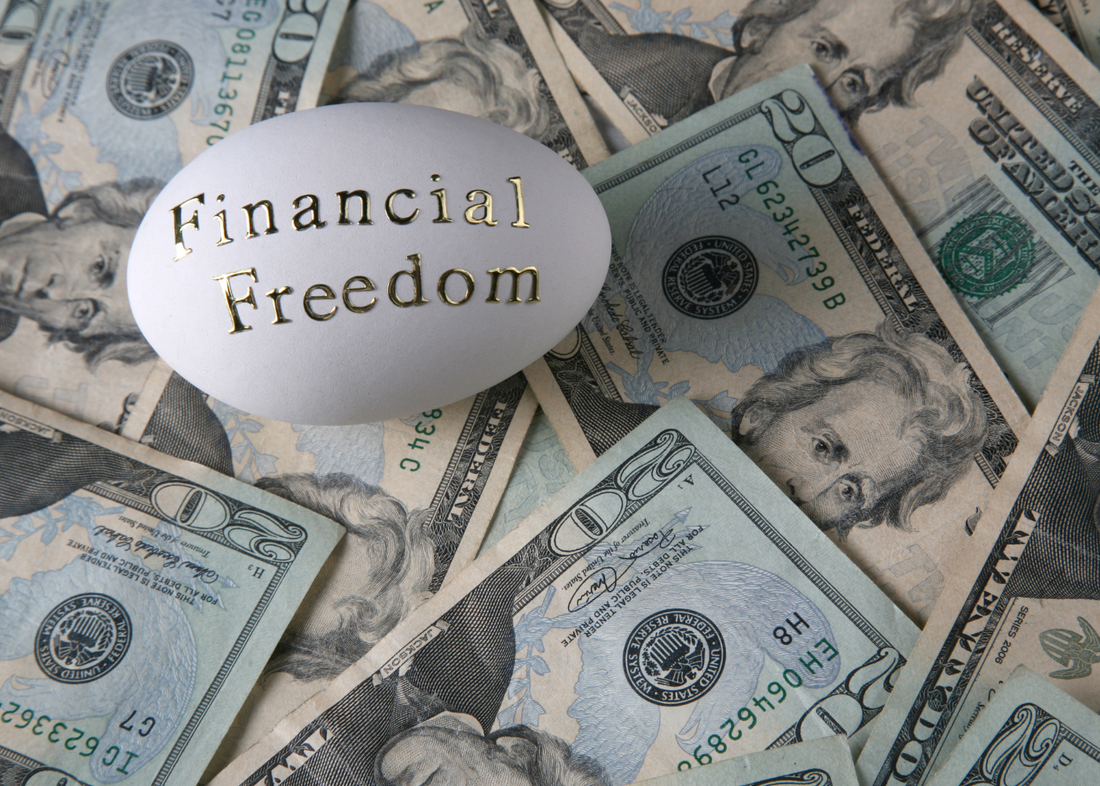Financial freedom - the path to independence

What does financial freedom mean?
The goal of financial freedom is usually to be able to maintain one's standard of living without having to continue actively working for it. So the goal is not great wealth, but enough money to cover monthly expenses and costs. For this purpose, interest or dividends are used as investment income.
People working toward the goal of financial freedom want to earn a corresponding additional income or retire early and enjoy their lives. In addition to the income side, people also become aware of the expenditure side. They consciously forgo unnecessary consumption and reduce their private spending to the bare essentials. The money they save gives them more opportunities to invest.
The path to financial freedom
The best way to achieve financial freedom is to earn enough money, and save and invest as much capital as possible to be profitable. If you have accumulated enough assets after some time, you can achieve financial freedom.
Earning money
Of course, income is elementary for building capital and thus wealth. The more money one earns each month, the sooner a large contribution can be "set aside" each month. The sooner assets are built up, the sooner the positive effects of capital investment become apparent. These can be compound interest effects, for example, which have a positive long-term impact when interest and dividends are reinvested.
Saving money
In addition to investments, classic saving is a step towards financial freedom. One possibility is a separate savings account into which capital is paid monthly. Access should be limited as far as possible in order to exclude unnecessary withdrawals. It can be useful to keep a record of the expenditures made and to keep a budget book.
Invest
Once you have successfully saved money, you can take the next step that leads to financial freedom: Investing. This involves investing the saved capital in various investment vehicles, for example, securities such as stocks, ETFs and savings plans, or even real estate.
Types of investment
Shares
The classic investment vehicle is the stock. Depending on the company, this type of investment brings opportunities and risks. With a share, one participates in a company and thus participates in the company's success. Stock markets often show strong fluctuations. Therefore, the invested capital should be available in the long term. Statistically speaking, the best results are achieved in the stock market when the investment horizon is long-term and amounts to at least several years. With this orientation, short-term fluctuations can be balanced out in the long term and shares can be an important building block for financial freedom.
Funds & ETFs
In addition to shares, there are other financial products - funds and ETFs - that offer high returns with a reasonable level of risk. In the case of ETFs, investors generally invest in a basket of shares that is based on the performance of an index 1:1, for example, the Nasdaq 100, the EuroStoxx 50, or the DAX.
Funds are usually managed by fund managers who actively invest money and select promising securities for this purpose. This active form of investment is expensive. Therefore, high fees are often charged to management. Of course, funds and ETFs are also subject to high fluctuations.
Real estate
Real estate is a classic form of investment. They are usually stable in value and are appreciated because of their material value. For example, you can invest in a real estate fund and spread your capital over various properties. If you buy a property directly, you have to deal with renting and management, which involves a certain amount of work.
The path to financial freedom:
- Investments enable financial freedom
- Above all, shares, share ETFs, share funds and real estate enable long-term attractive returns
- Compound interest effects and price increases provide financial freedom
No comments
Home
Trive
TriveHub





0 comments